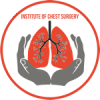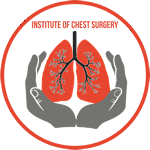The aorta, the body’s main artery, carries oxygen-rich blood from the heart to various parts of the body. An aortic aneurysm refers to a potentially life-threatening condition where a weakened section of the aortic wall bulges and expands abnormally. When this occurs in the posterior mediastinum, the area behind the heart, it can pose significant health risks. Identifying the symptoms and signs of an aortic aneurysm in the posterior mediastinum is crucial for early detection, prompt medical intervention, and reducing the risk of potentially life-threatening complications. In this blog post, we will explore the key symptoms and signs of aortic aneurysm in the posterior mediastinum, the importance of early diagnosis, and available treatment options.
1. The Posterior Mediastinum and Aortic Aneurysm: An Overview
The posterior mediastinum is a compartment within the chest cavity, situated behind the heart and between the lungs. It contains essential structures, including the thoracic aorta, the largest portion of the aorta that runs through the chest. An aortic aneurysm in the posterior mediastinum occurs when a weakened area of the thoracic aorta expands, putting the artery at risk of rupture or dissection.
2. Common Symptoms and Signs of Aortic Aneurysm in the Posterior Mediastinum
Early diagnosis of an aortic aneurysm in the posterior mediastinum greatly improves the chances of successful treatment and minimizes complications. Recognizing the following symptoms and signs is crucial:
2.1. Chest Pain:
One of the hallmark symptoms of aortic aneurysm is chest pain. Patients may experience a sharp, tearing, or stabbing pain in the chest, upper back, or between the shoulder blades. The pain may radiate to the neck, jaw, or abdomen.
2.2. Difficulty Breathing:
As the aneurysm grows and exerts pressure on adjacent structures, it can lead to difficulty breathing, shortness of breath, or a feeling of constriction in the chest.
2.3. Hoarseness or Coughing:
An enlarging aortic aneurysm can compress the recurrent laryngeal nerve, causing hoarseness or a persistent cough.
2.4. Swallowing Difficulties:
In some cases, a large posterior mediastinal aortic aneurysm may compress the esophagus, leading to swallowing difficulties or discomfort while eating.
2.5. Back Pain:
Pain in the upper back, particularly in the area between the shoulder blades, can be a warning sign of a thoracic aortic aneurysm in the posterior mediastinum.
2.6. Pulsating Mass:
A physician may detect a pulsating mass in the chest during a physical examination. This pulsation is a significant indicator of aortic aneurysm.
3. The Importance of Early Diagnosis and Treatment
Early diagnosis of an aortic aneurysm in the posterior mediastinum is critical to prevent life-threatening complications. If left untreated, an aneurysm can rupture, causing severe internal bleeding and leading to a medical emergency with high mortality rates.
3.1. Diagnostic Tests for Aortic Aneurysm:
To confirm the presence of an aortic aneurysm in the posterior mediastinum, healthcare providers may employ several diagnostic tests, including:
- Chest X-ray: An initial chest X-ray may reveal an abnormal shadow on the aorta or mediastinal widening.
- Computed Tomography (CT) Scan: CT scans provide detailed images of the aorta and surrounding structures, allowing for precise assessment of the aneurysm’s size and location.
- Magnetic Resonance Imaging (MRI): MRI can provide additional information about the aortic aneurysm and its relationship with adjacent organs.
- Transesophageal Echocardiogram (TEE): TEE is a specialized ultrasound that allows for a close evaluation of the thoracic aorta from inside the esophagus.
3.2. Treatment Options:
The management of aortic aneurysm in the posterior mediastinum depends on various factors, including the aneurysm’s size, growth rate, and the patient’s overall health.
- Watchful Waiting: For small and stable aneurysms, regular monitoring may be sufficient to detect any changes over time.
- Medications: Certain medications, such as beta-blockers, may be prescribed to lower blood pressure and reduce stress on the aortic wall.
- Endovascular Repair: In some cases, endovascular repair, a minimally invasive procedure, may be recommended. During this procedure, a stent graft is inserted into the aorta to reinforce the weakened section of the artery.
- Surgical Repair: Large or rapidly growing aneurysms may require open surgical repair, where the damaged portion of the aorta is replaced with a synthetic graft.
4. Preventive Measures and Lifestyle Changes
While not all aortic aneurysms can be prevented, certain lifestyle modifications can reduce the risk of developing or worsening an existing aneurysm:
- Manage Blood Pressure: Controlling high blood pressure is essential in preventing further dilation of the aorta.
- Avoid Tobacco Use: Quitting smoking can significantly decrease the risk of aortic aneurysm development and progression.
- Maintain a Healthy Diet: Adopting a diet rich in fruits, vegetables, whole grains, and lean proteins supports cardiovascular health.
- Regular Exercise: Engaging in regular physical activity promotes heart health and helps maintain a healthy weight.
- Regular Check-ups: Routine check-ups with a healthcare provider can facilitate early detection and timely intervention.
5. Conclusion
Aortic aneurysm in the posterior mediastinum is a serious condition that requires prompt attention. Recognizing the symptoms and signs is crucial for early diagnosis, allowing healthcare providers to implement appropriate treatment and preventive measures. If you experience any symptoms associated with an aortic aneurysm, such as chest pain, difficulty breathing, or persistent coughing, seek medical attention immediately. Early detection and intervention can make a significant difference in successfully managing this potentially life-threatening condition and improving overall patient outcomes.
Remember, the information provided here is for educational purposes only and should not be considered a substitute for professional medical advice. If you suspect an aortic aneurysm or have any health concerns, consult a qualified healthcare professional for accurate evaluation and guidance.







